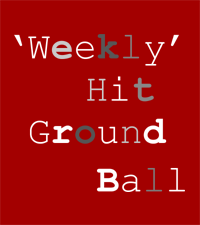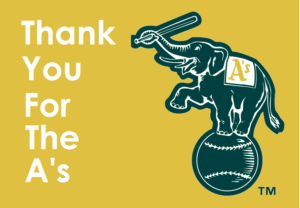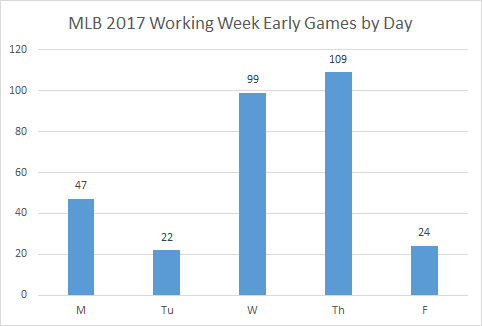 With November and December in the rear-view mirror, it’s time to get my weekly MLB column back up-and-running as we start looking ahead to pitchers and catchers reporting to their 2018 Spring Training camps and beyond.
With November and December in the rear-view mirror, it’s time to get my weekly MLB column back up-and-running as we start looking ahead to pitchers and catchers reporting to their 2018 Spring Training camps and beyond.
The planned format for ‘Weekly Hit Ground Ball’ in 2018 is to be a round-up column of the key news stories and moments from the week just gone, with a few personal reflections along the way.
It will be published every Sunday morning and, once we get to the regular season, will also pick out a few of the most enticing games to watch on a Sunday evening in Britain – typically the best time of the week for us to catch live baseball.
The Not Hot Stove
The main news, of course, is the lack of news. The so-called baseball off-season Hot Stove is barely simmering as the free agent market is taking time to develop, which has a knock-on effect on the trade market (and vice versa).
Now that the Christmas break is over, we’re starting to see an increase in rumoured offers to free agents – the interest of the San Diego Padres and Kansas City Royals in Eric Hosmer being a good example – and the feeling is we’ll start to see the dominoes falling over the next couple of weeks.
Much is being made of next year’s free agent class and the impact it is having on the market this off-season; however, it remains to be seen what effect that will actually have. Whilst there is undoubtedly some outstanding talent waiting in the wings – Bryce Harper, Manny Machado and potentially Clayton Kershaw topping the list – only a small number of teams are going to come out of the 2018/19 off-season with a big prize.
Even though teams will make decisions this year with next year’s market in mind, there is plenty of good talent out there this off-season. We’ll soon start to see teams identifying the right player for them at the right price. Not getting jam today in the hope of better jam tomorrow is smart if it works out, but teams looking to improve will be all too aware of the potential for the Yankees, Dodgers are their ilk to buy up all the best jam next off-season and leave them empty-handed.
Rockies in relief
The Colorado Rockies certainly aren’t waiting around as they have put plenty of money into their bullpen in recent weeks.
They re-signed free agent Jake McGee to a 3-year, $27m contract (approximately £127k per week), gave the same contract to Bryan Shaw (formerly of the Cleveland Indians) essentially to replace the departed Pat Neshek and then signed Wade Davis to a 3-year, $52m contract (approximately £245k per week) to replace Greg Holland (a free agent yet to find another team).
We all know that the performance of relief pitchers can be quite volatile year-to-year so committing this amount of money to three relievers is a risk. However, the Rockies’ relievers played an important part in the club earning a Wild Card in 2017, so it’s not surprising that they’ve decided to spend money in that area in an attempt to keep that part of the team strong.
Here’s how the Rockies’ bullpen ranked in Fangraphs WAR over the past five seasons, alongside Colorado’s win-loss record:
2017 – 87-74 (2nd NL Wild Card) – Rockies relievers ranked 6th in MLB with a 6.4 WAR
2016 – 75-87, ranked 23rd (3.9)
2015 – 68-94, ranked 22nd (2.0)
2014 – 66-96, ranked 29th (-0.2)
2013 – 74-88, ranked 10th (4.2).
The 2013 bullpen was pretty good, although not much else on the team was. The relief corps were led by Matt Belisle, Adam Ottavino and Rex Brothers, and looking through their stats reminded me that Roy Oswalt made 3 relief appearances for them that year.
The Rockies had a very positive 2017 despite their major free agent signing from the off-season not working out. Signing Ian Desmond to a 5-year, $70m contract with the intention of him playing first base looked a questionable decision to put it mildly. His progress wasn’t helped by several injuries and that was unfortunate, yet he didn’t play well when he was on the field either.
Desmond’s downturn didn’t scupper the Rockies in 2017, but the same probably won’t be the case in 2018 if their bullpen spending doesn’t produce the goods. It’s a risk and a package of spending that plenty of writers have questioned, but there’s a bit of me that likes the fact that they’re at least having a go.
Phillies adding too
The Philadelphia Phillies are another team who have made a few dips into the free agent market, signing relievers Pat Neshek and Tommy Hunter and then adding former Cleveland Indian Carlos Santana on a three-year, $60m contract (approximately £283k per week).
The Phillies are a great example of how teams can go in cycles in MLB. They’ve been in rebuilding mode in the last five/six seasons after a dominant five-year run at the top of the NL East between 2007 and 2011 during which they made it to the World Series twice (winning in 2008). They were in the top three or four of all MLB payrolls between 2010 and 2014 before slashing costs and heading into the bottom third of MLB spending over the past couple of years.
Now that their young talent is starting to emerge at the Major League level – Rhys Hoskins especially catching the eye last season – the Phillies are being linked with making a big move among the elite free agent talent in the next off-season.
However, there’s value in the Phillies adding some talent around their youngsters this year too and getting back into play-off contention in stages, rather than trying to make a big jump. Money talks loudest, but a good jump forward in 2018 (maybe to 78/80 wins or so) may also help to convince a big free agent that the Phillies are heading in the right direction and that the new signing will not have to turn them around on his own.
More Marlins misery
The latest instalment in the Miami Marlins saga was revealed by the Miami Herald this week after they got hold of documents that Derek Jeter and his fellow Marlins’ owners sent around to potential investors.
Among other dispiriting revelations was the detail of Project Wolverine as it was called that set out the ownership’s hopes for boosting revenue whilst significantly cutting the MLB payroll and therefore promising investors a healthy return on their investment.
It just adds even more salt to the wounds for Marlins fans that the pain of seeing Stanton, Ozuna and Gordon traded away (with more likely also heading out of the door) and knowing that they will be sitting through more years of poor baseball from their team will all go to help line the pockets of rich investors.
It’s hard to imagine a fanbase being treated more poorly than what those that follow the Marlins have had to endure in recent years.
More writers joining The Athletic
The subscription-based sports-writing site The Athletic is continuing to add impressive names to their baseball coverage. Most notable for me has been the full-time appointment this week of Melissa Lockard who for years has provided outstanding coverage of Oakland A’s prospects at Oakland Clubhouse. She’s the new staff writer/editor of the San Francisco section of The Athletic.
If you’re a fan of multiple North American sports then a subscription for The Athletic is quickly becoming close to a must-have. I only really follow baseball so, as with the ESPN Inside subscription over the years, in that situation it’s a bit more of a decision as to how much value you get when a considerable amount of coverage relates to sports you may not be greatly interested in. However, the increasing amount and high quality of baseball coverage they offer has tempted me in, so I’ll update in a month or so as to value for money when it comes to pure baseball fans.
First impression is that the website easily allows you to select what sports/teams you’re interested in seeing stories about, so if baseball is your focus you can just choose to display those (and then amend/update it as you like from then on).
Books on the way
We’re also at the time of year when pre-season book purchases are being considered. The two main titles I buy are the Baseball Prospectus Annual and the Ron Shandler Baseball Forecaster. The usual UK book outlets have 15 January as the release date for the Forecaster and 9 February for BP. I’m counting down the days, but you can find that the dates are pushed back a bit when it comes to UK online shops having them in stock.
It’s also worth noting that the price of Kindle versions of baseball books (probably US books more generally) can change quite significantly. For example, when the Bill James Handbook 2018 was released the Kindle version initially was almost the same price as the paperback version (approximately £18), but a few weeks on the price was revised down to approximately £12. If you’re going the Kindle route – I’ve found over the years I tend to prefer getting paperback versions of stat-based books – you can often end up saving £5 or so just by waiting a bit before Amazon.co.uk adjusts the price.



